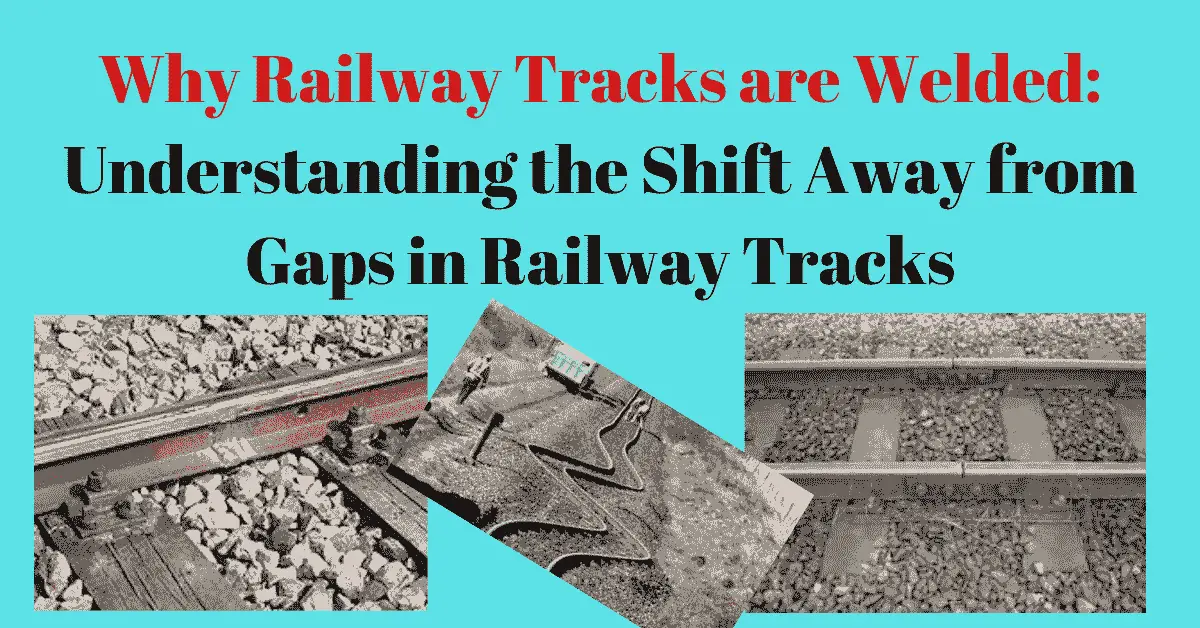Railway tracks are a crucial component of any railway network, enabling the smooth and safe movement of trains across long distances. But have you ever wondered why some of these tracks have gaps and others are welded?
First, we will take a closer look at the key components of railway tracks, how temperature affects them, and why some tracks have gaps while others are welded.
The Components of Railway Tracks
Railway tracks consist of several key components, each of which plays a critical role in ensuring the safe and efficient movement of trains.
These components include:
Rails: Rails are the primary component of railway tracks and are typically made of steel. These long, narrow bars are laid end-to-end to create a continuous track for trains to travel on.
Sleepers: Sleepers, also known as ties, are rectangular blocks made of wood, concrete, or steel that are placed perpendicular to the rails to provide support and stability.
Ballast: Ballast is a layer of crushed rock, gravel, or other materials that are laid beneath the sleepers to provide additional support and stability. It also helps to distribute the weight of the trains evenly across the track.
Fastenings: Fastenings are the devices used to secure the rails to the sleepers. These can include spikes, clips, or bolts, depending on the type of track.
The Property of Steel with the Change of Temperature
One of the most critical factors affecting the performance of railway tracks is temperature. Steel, the primary material used for rails, has a coefficient of thermal expansion, which means it expands and contracts with changes in temperature. The expansion of rails can cause the rails to buckle or warp, which can lead to derailments and other safety issues.
The decrease in temperature or cooling of the rails causes contraction of the rails. The contraction can result in tensile stresses which in extreme cases can cause fracture of rails due to brittleness and cracks.
What Happens to Rails When the Temperature Fluctuates
When the temperature gets hotter the rails expand and when the temperature gets colder they contract. For instance, In Britain rails in direct shine can be 20°C hotter than the surrounding air. When the air gets hotter during the summer, the rails expand too much, they can push against each other, causing them to buckle or warp. This can result in derailments and other safety issues.
Similarly, if the temperature drops suddenly, the rails can contract, causing gaps to form between them due to breaking. These gaps can pose a safety risk to trains, especially at high speeds, as they can cause the wheels to bounce and lose contact with the rails.
Why Gaps Are Left In Some Railway Tracks
To prevent buckling or warping of rails, some railway tracks especially older ones are designed with expansion gaps between the rails. These gaps allow the rails to expand and contract without pushing against each other, reducing the risk of buckling or warping.
However, after being used for some time, the areas near the gaps usually result in settlement due to the weakening of the joints. That creates discomfort to passengers and wear of railway components. The railway parts near the expansion gaps can also pose a safety risk to trains, especially at high speeds, as they can cause the wheels to bounce and lose contact with the rails.
Why Railway Tracks are Now Welded Instead of Having Expansion Gaps Between Each Track
In recent years, many railway tracks have been upgraded to eliminate expansion gaps between the rails. Instead, the rails are continuously welded rails (CWR) which are welded together to create a continuous, seamless track.
Welding the rails together eliminates the risk of gaps forming between them, reducing the risk of derailments and other safety issues. It also provides a smoother, more comfortable ride for passengers and reduces the wear and tear on trains.
The effect of a significant increase or decrease in the temperature for continuously welded rail (CWR) is avoided nowadays by implementing the following measures. The first is using sleepers made of concrete and fixing them with a strong fastening system. The other measure is stressing of rails where rails are stressed mechanically or thermally. This ensures that the stress during temperature changes does not cause failure. This is done by stressing the rails before laying i.e. the rails are elongated by hydraulic jacks or heated in advance, before being locked onto the rails with rail fasteners.
In addition, the robust condition of ballast and adjacent structures can reduce the incidence of rail failure due to changes in temperature.

